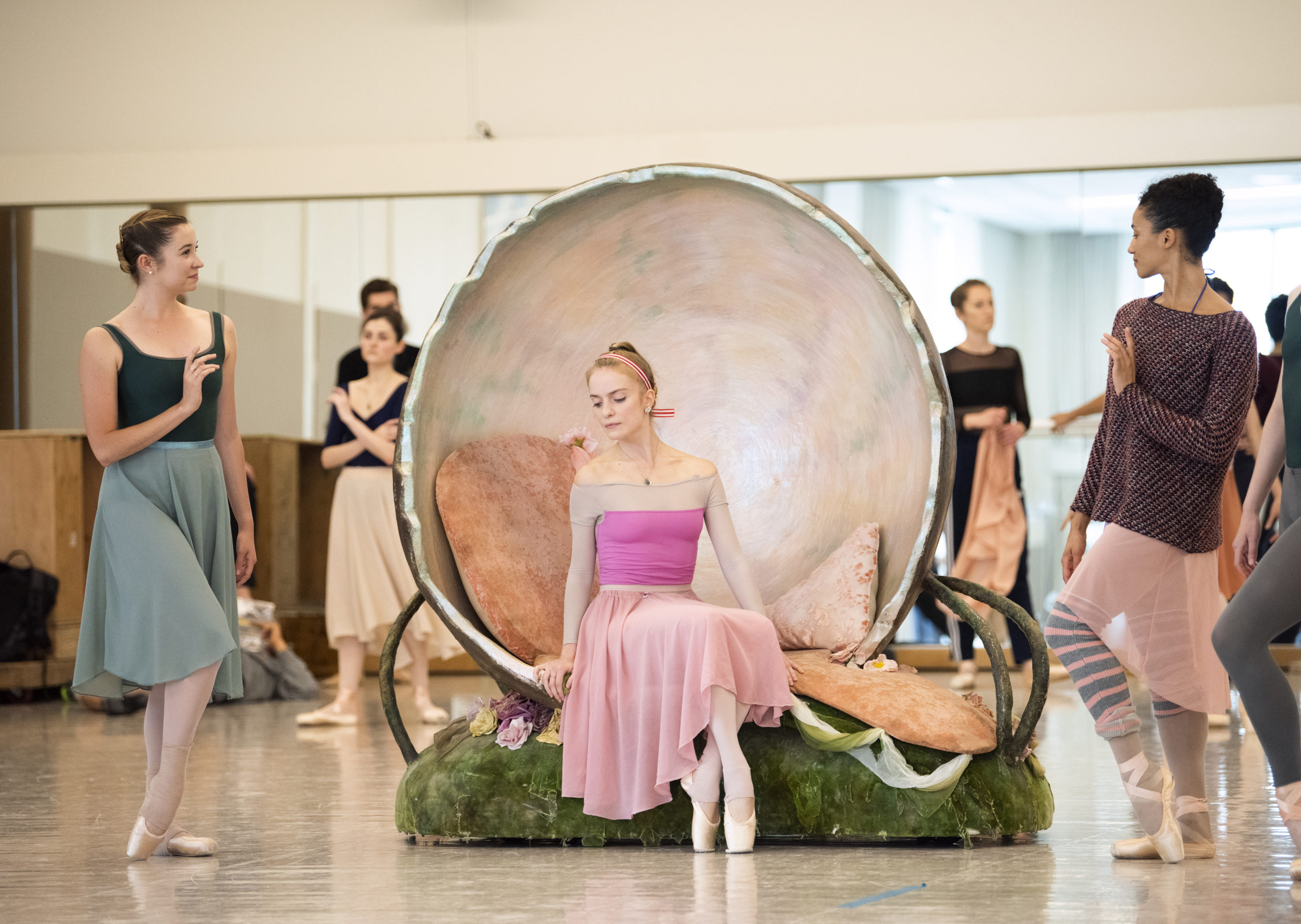SAN FRANCISCO, FEBRUARY 18, 2020—San Francisco Ballet (SF Ballet) presents George Balanchine’s A Midsummer Night’s Dream, a tale of love, magic, and revelry that’s fun for the entire family, on March 6–15 at the War Memorial Opera House. The full-length ballet includes some of Shakespeare’s best-known characters, including Titania, Oberon, Puck, and donkey-headed Bottom—providing more than 100 roles in all, including 14 leading parts and a cast of 25 children. “I think Balanchine did such a superb job with Midsummer,” says Artistic Director and Principal Choreographer Helgi Tomasson, who danced as Oberon, King of the Fairies, with New York City Ballet in the late ‘70s and early ‘80s. “It has humor. It has suspense. It has love. And even if you are not a ballet aficionado, you immediately understand what’s going on.”
When Titania, the Queen of Fairies, refuses to give up her charming young page, King Oberon enlists the trickster Puck to stir up some magic, causing a domino effect among fairy and human couples alike. The production includes woodland scenes and costumes designed by Tony Award-winner Martin Pakledinaz, a longtime SF Ballet collaborator whose work can be seen in the Company’s productions of Nutcracker and Don Quixote, and celestial lighting designed by Randall G. Chiarelli. Midsummer’s cast of fairies, mortals, bugs, and mis-matched lovers is set to music by Felix Mendelssohn, and SF Ballet’s 10 performances will feature Volti, a live chorus, performing with the SF Ballet Orchestra throughout the run.
Non-stop dancing is a highlight of A Midsummer Night’s Dream, which distills Shakespeare’s five acts into two. Act I introduces the story and characters at a rapid pace, while Act II is devoted to a wedding scene with a divertissement between two newly introduced characters. “There’s Hippolyta’s solo, Hermia’s solo, several pas de deux as well as a dance for six couples that occurs in the ballet’s second act. But one of the very first pieces I teach is Oberon’s solo, which is supremely difficult,” says Sandra Jennings in In Dance. A full-time repetiteur with The George Balanchine Trust, Jennings staged Midsummer at SF Ballet this past summer. Balanchine’s demanding choreography—especially for Oberon—and a full cast of characters are two hallmarks of this work.
A Midsummer Night’s Dream is Balanchine’s first original full-length ballet completed in America, created in 1962 for New York City Ballet. He had been inspired by Mendelssohn’s Midsummer compositions, both a concert overture and incidental music for the play, though the pieces were not long enough to use for an evening-length ballet. A conservatory-trained musician, Balanchine pieced together additional selections from Mendelssohn’s repertory to complete the ballet’s music, including a selection of concert overtures; the String Symphony No. 9 in C minor; and The First Walpurgis Night, a secular cantata for full chorus. The production runs two hours in length, including one 15-minute intermission.
On Wednesday, March 11, Helgi Tomasson will be featured in a free and open to the public Pointes of View lecture from 6:00-6:45 pm in the War Memorial Opera House. A pre-performance fundraising dinner will take place on opening night, Friday, March 6 at the Conservatory of Flowers. Meet the Artist interviews will take place March 6 at 7pm; March 8 at 1 pm; March 12 immediately following the performance; March 14 immediately following the matinee; and March 15 at 1 pm.
Rehearsal images of A Midsummer Night’s Dream are available at this link. Please contact Kate McKinney by email at kmckinney@sfballet.org for all press inquiries. Casting will be available at this link one week before each performance.
Calendar information:
Program 04: A Midsummer Night’s Dream tickets are available now as single tickets or within a subscription package. All tickets may be purchased via the Ticket Services Office at 415-865-2000, Monday through Friday from 10 am to 4 pm, or online at www.sfballet.org. Discounts are available for groups of 10 or more.
A Midsummer Night’s Dream
Ballet in Two Acts and Six Scenes
Composer: Felix Mendelssohn
Choreography: George Balanchine
Staged by: Sandra Jennings
Scenic & Costume Design: Martin Pakledinaz
Lighting Design: Randall G. Chiarelli
World Premiere: January 17, 1962—New York City Ballet, City Center of Music and Drama; New York, New York
San Francisco Ballet Premiere: March 12, 1985—War Memorial Opera House; San Francisco, California
© The George Balanchine Trust
Music: A Midsummer Night’s Dream Overture, Op. 21; selections from A Midsummer Night’s Dream Incidental Music, Op. 61; Overture to Athalie, Op. 74; The Fair Melusine Overture, Op. 32; Overture to The First Walpurgis Night, Op. 60; Allegro and Andante from Symphony No. 9 for Strings; Son and Stranger Overture, Op. 89. This performance of A Midsummer Night’s Dream, a Balanchine© Ballet, is presented by arrangement with the George Balanchine Trust and has been produced in accordance with the Balanchine Style© and Balanchine Technique© service standards established and provided by the Trust. Scenery, Properties, and Costumes Courtesy of PACIFIC NORTHWEST BALLET, Peter Boal, Artistic Director.
Friday, March 6, 2020 at 8:00 pm
Saturday, March 7, 2020 at 2:00 pm
Saturday, March 7, 2020 at 8:00 pm
Sunday, March 8, 2020 at 2:00 pm
Tuesday, March 10, 2020 at 7:30 pm
Wednesday, March 11, 2020 at 7:30 pm
Thursday, March 12, 2020 at 7:30 pm
Saturday, March 14, 2020 at 2:00 pm
Saturday, March 14, 2020 at 8:00 pm
Sunday, March 15, 2020 at 2:00 pm
****



